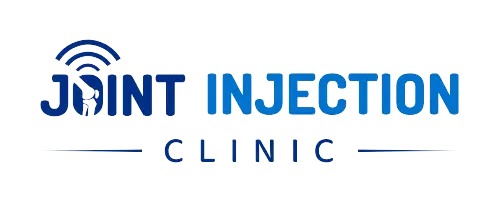Medial and Lateral Collateral Ligament Injuries: Causes, Symptoms, and Treatment
Reviewed By – Dr. Sameer Gohir
PhD, MSc, PG Cert MSK ultrasound, PG Cert. Non-Medical Prescribing, MCSP, MAPPN
What Is MCL and LCL Injuries?
Collateral ligament injuries involve damage to the two ligaments located on the sides of the knee: the medial collateral ligament (MCL) on the inner side and the lateral collateral ligament (LCL) on the outer side.
These ligaments play a crucial role in stabilizing the knee during movement, particularly in activities that involve side-to-side motion and quick pivots.
If knee pain or instability from an MCL or LCL injury is affecting your movement, help is close by. With clinics near Kent and Essex, Joint Injection Clinic offers expert care to support your recovery and get you moving confidently again.

Common Causes of MCL and LCL Injuries
Medial Collateral Ligament (MCL) Injury Causes
MCL injuries commonly occur due to:
MCL injuries are often graded from mild (Grade 1) to severe (Grade 3), with higher grades indicating a more extensive tear.
Lateral Collateral Ligament (LCL) Injury Causes
LCL injuries can occur under similar circumstances but involve stress on the outer knee:
Like the MCL, LCL injuries are also classified from Grade 1 to Grade 3 based on severity.
Symptoms of Collateral Ligament Injuries
For both MCL and LCL injuries, symptoms may include:
How are MCL and LCL Injuries Diagnosed?
Diagnosis typically involves a physical examination where a healthcare provider assesses the knee for stability, tenderness, and swelling. Imaging tests such as X-rays or MRI scans may be ordered to confirm the diagnosis and rule out other injuries.
Treatment Options
Non-Surgical Treatment for MCL and LCL Injuries
For both MCL and LCL injuries, initial treatment often follows the RICE protocol:
Surgical Treatment for MCL and LCL Injuries
Recovery and Prognosis
Recovery time varies by injury severity:
With proper treatment and rehabilitation, many patients, including athletes, return to their regular activities, sometimes with protective bracing during sports.
Prevention Tips
To help reduce the risk of collateral ligament injuries:
Conclusion
Collateral ligament injuries, while common, can often be effectively treated through conservative or surgical methods. Understanding the causes and symptoms, along with early intervention, facilitate a successful recovery and a return to an active lifestyle.
Get Help for MCL and LCL Injuries at Joint Injection Clinic
If an MCL or LCL injury is causing knee pain, swelling, or instability, you don’t have to manage it alone. At Joint Injection Clinic, our experienced team offers personalised, evidence-based treatments to reduce pain and support knee stability.
We welcome patients at all three of our clinics:
Dartford Clinic – ideal for those in Kent and South East London
Address: Unit 30, 1st Floor, The Base Dartford Business Park, Victoria Road, Dartford, DA1 5FS.
Romford Clinic – easily accessible from Essex and Greater London
Address: Room no 8, Alliance Office Space 2-4 Eastern Road, Romford, Essex, RM1 3PJ.
Canterbury Clinic – serving East Kent and surrounding areas
Address: 12-17 Upper Bridge Street, Canterbury, CT1 2NF, United Kingdom.
From ultrasound-guided assessments to targeted physiotherapy and rehabilitation plans, our specialists can help manage knee pain effectively, aiding your recovery and helping you return to the activities you enjoy.
